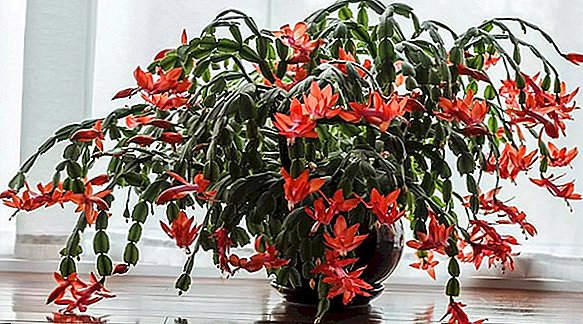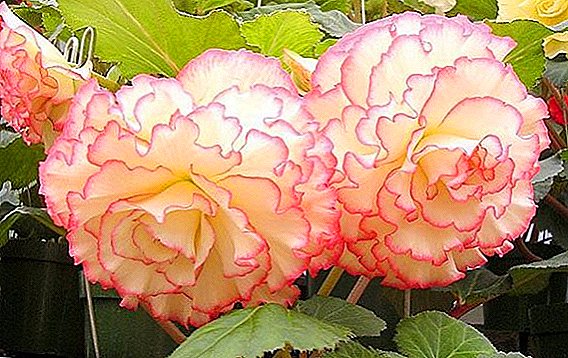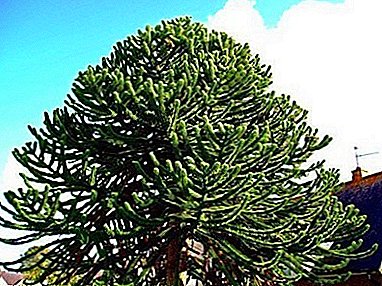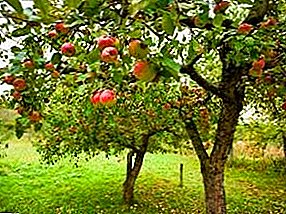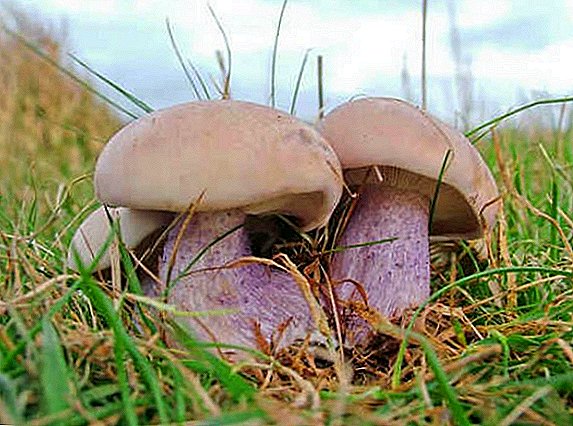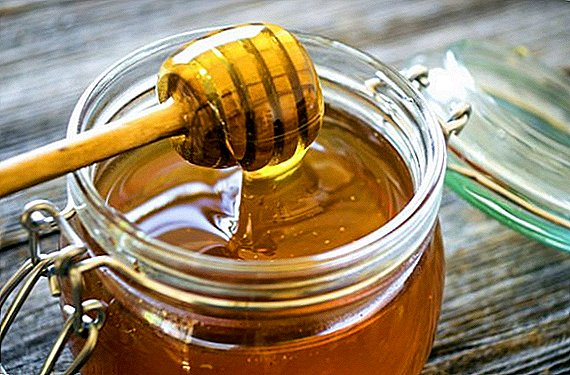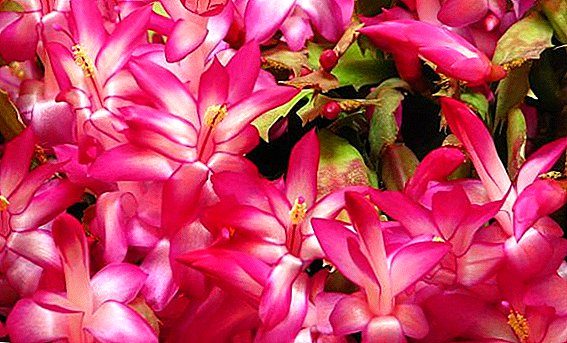 Christmas tree (he is a Decembrist) is one of the most popular home cacti, which got its name due to the bright flowering at the beginning of winter. Usually there are no problems with its cultivation, but if any inaccuracies were made in the care, then the body of the plant and its flowers may lose their elasticity - to wither. What causes of this phenomenon can and how to eliminate them correctly and will be discussed further.
Christmas tree (he is a Decembrist) is one of the most popular home cacti, which got its name due to the bright flowering at the beginning of winter. Usually there are no problems with its cultivation, but if any inaccuracies were made in the care, then the body of the plant and its flowers may lose their elasticity - to wither. What causes of this phenomenon can and how to eliminate them correctly and will be discussed further.
Basic rules for growing the Decembrist
When growing an exotic cactus, you will have to take into account several important rules for its good decoration and timely flowering, the violation of which may well lead not only to fading, but also to shedding the ovaries. 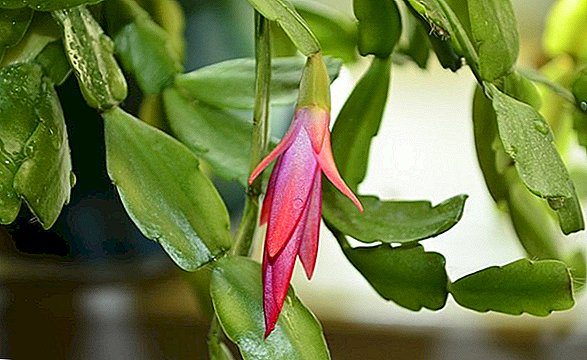
First of all, you should avoid the following:
- sudden changes in temperature;
- overflow of a plant when watering;
- use of an excessive amount of nutrient mixtures, especially in September-October, when the plant begins to prepare for the appearance of buds (it will be possible to resume feeding after the formation of flowers);
- use of nutrient mixtures with a limited amount of phosphorus and potassium in their composition;
- active watering and feeding during the appearance of buds on the branches (at this time the plant needs rest);
- constant movement of the pot from place to place, especially with a sharp change in temperature and lighting conditions;
- watering the plant at its discretion, without taking into account the time of year and the phase of flower development.
Did you know? With properly organized care, the life of the Decembrist is about 30 years and during this time the stalks of the houseplant can grow up to 60 cm in length.
Why does the Decembrist fade?
The withering of the Christmas tree can manifest itself with completely different symptoms, because in some cases the turgor loses only the leaves, in others the whole shoots fall, and in rare situations the elasticity of the whole plant may decrease. Sometimes the causes of sudden changes lie in external factors, although in determining they should not exclude the possibility of decay of the rhizomes triggered by infectious processes, depletion of the nutrient reserves of the substrate or the banal Decembrist overflow. Consider all possible grounds for the decay of the cactus more closely.
Infections and pests
The development of various diseases and pest attacks are the first suspects in the search for the cause of the withering of indoor plants, which should not be ruled out even if you think that care for the cactus is close to perfect. To understand why your Decembrist has sluggish leaves and the elasticity of shoots has decreased, knowing the symptoms of the following problems will help. 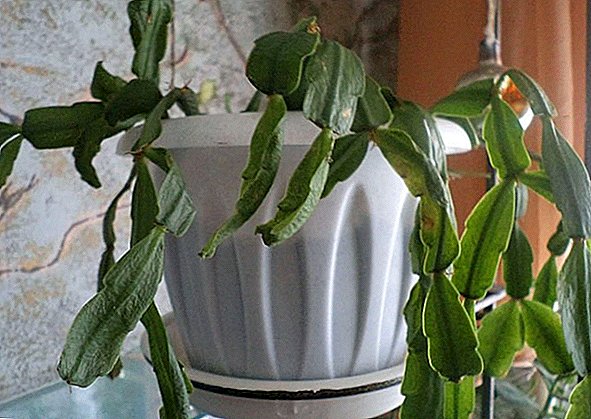
Shchitovka
The shield is a harmful insect, no larger than 5 mm in size. You can notice it with a thorough examination of the plant, although in most cases it is found only when the leaves are yellowing and drying out. While some parts of the plant are dry, others start to fade, and after a while the whole cactus dies.
We advise you to read about the diseases and pests of the Decembrist.
With a small lesion, mechanical cleaning of the surface of the shoots with cotton swabs, moistened solutions of Karbofos or Tanrek preparations will help to cope with the problem, and it is possible to prevent the reappearance of the pest by reducing the humidity level and increasing the solar illumination (reduces the rate of reproduction of the flap) in the room with the Decembrist .
In the absence of special insecticidal drugs, folk remedies can help in the fight against the shield. For example, it is useful to spray plants with a mixture prepared from 1 liter of water, 40 g of soap and 5 drops of kerosene.
After thorough agitation, the solution is applied to a cotton swab and wipe all the damaged areas of the Decembrist with it. Alternatively, wipe the leaves of the plant with onion juice (1 finely chopped onion mixed with 200 ml of water and left to infuse for 2-3 hours).
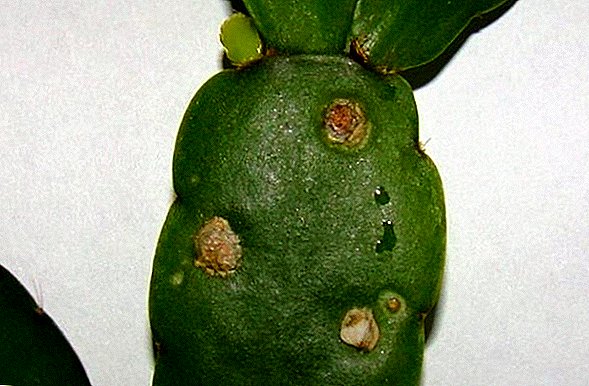
Fungus
Of the fungal diseases, the Christmas tree often suffers from phytophtoras, pythium and fusarium, each of which can cause flowers to wilt and even shoots. Most often, the infection of the cactus occurs through the contaminated soil, and in the first place, the root neck is almost always damaged, and after it the buds wilt and leaves become soft. In the future, the plant loses its usual green color, tarnishes and acquires a grayish color.
Important! After buying any new plant, leave it in the quarantine zone for at least 2 weeks, which in case of illness will help prevent infection of the already existing flowers.
In the fight against late blight and pitium help drugs such as:
- "Fast" (1 ml per 1 l of water);
- "Topaz" (2 ml per 10 l of water);
- Maxim (5 drops per 200 ml of water);
- Vitaros (2 ml per 2 liters of water).
For the prevention of fusarium, Mycol and Bayleton will be useful, but if the infection has already happened, then it will be impossible to cure the cactus. The diseased plant is simply burned (thrown away), and the soil in which it grows is shed with a solution of potassium permanganate.
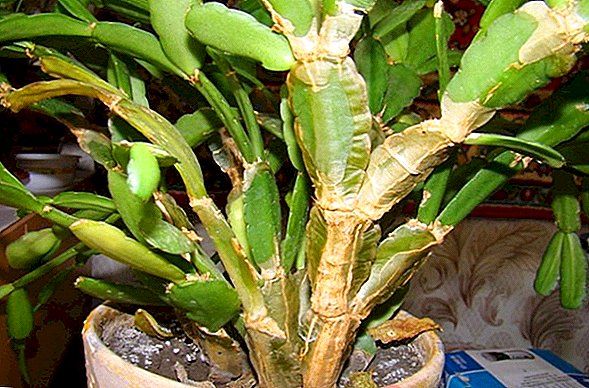
Spider mite
This pest is a small insect of brown, green or red color, which can be seen with the naked eye. Favorable conditions for the active reproduction of spider mites will be excessively dry air in the room, and for the Decembrist it moves from other pot plants. Having discovered an insect, the affected plant should be treated with one of the following preparations: "Fitoverm", "Neoron", "Aktellik". The intervals between these treatments will depend on the air temperature in the room: at +20 ° C - about 9-10 days, and at + 30 ° C - 3-4 days.
Of the popular methods of struggle, at the very first symptoms of a lesion (limited growth, wilting and falling leaves), it is worth using a solution of laundry soap, after which the sheet plates of the Decembrist are left to dry for two hours. After removing the rest of the solution with clean water, a plastic bag is put on the cactus and left in this condition for another 7-10 days. After a week, the treatment is recommended to repeat, at the same time increasing the humidity in the room.
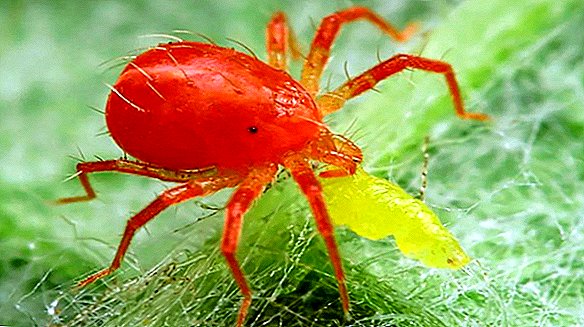
Mealybug
Another sucking pest, often found on room vegetation. You can find it on the oval pink body, covered with white bloom. On the back of the insect, transverse stripes are distinguished, but it is possible to notice it not so much by them, as by the traces of mucous remaining on the leaves and flowers of the Decembrist. Christmas buds quickly wither and fall off, so it is desirable to detect the problem as soon as possible.
As a preventive measure, it is recommended that you water the Decembrist regularly and remove dried leaflets from it in time, but after infection you will have to use more radical measures, which are expressed in treating the leaves with special chemicals, such as Aktara or Konfidora (on 200 ml of water, on average, 2 ml of the drug). Re-spraying perform a week after the previous one. 
Content errors
Violation of the requirements for care - the most common cause of deterioration of the appearance of the Christmas tree. Improperly organized watering or excessive saturation of the soil with nutrients often cause wilting of the leaves and further drying of the plant, often associated with damage to the root system. That is why it is so important to know exactly what each florist mistake threatens.
Fertilizer oversupply
Christmas tree does not impose increased requirements for feeding, so during the growing season the cactus should be fertilized no more than once a month. As for nutrient mixtures, complex mineral compositions intended for other flowering ornamental plants will be useful for the plant, although the dosage will have to be reduced twice (from the norm indicated on the package). If desired, you can use compositions intended for cacti, which contain a minimum of nitrogen. In general, the Decembrist is a plant that is better not to feed, than to overfeed with nutrients.
Important! Starting from September and up to the formation of the buds, any dressings should be excluded, otherwise there is a possibility of shedding of the ovaries of the pot.
Wrong watering method
Like all cacti, the described Decembrist is able to do without watering for a long time, but overflow, especially if the normal air temperature in a room with a plant is disturbed, may well lead to decay of the root system, with all the ensuing consequences.
Root System Diseases
Practically all diseases of the root system are to one degree or another associated with the overmoistening of the substrate and the rapid development of putrefactive processes. Being in this state, the rhizome is no longer able to transfer nutrients to the aerial part, so the leaf plates wither and soon fall off completely. Regularly inspect the rhizome for damage and make sure that the surface of the substrate at the stem is not covered with mold. Broken roots are removed as soon as they were discovered.
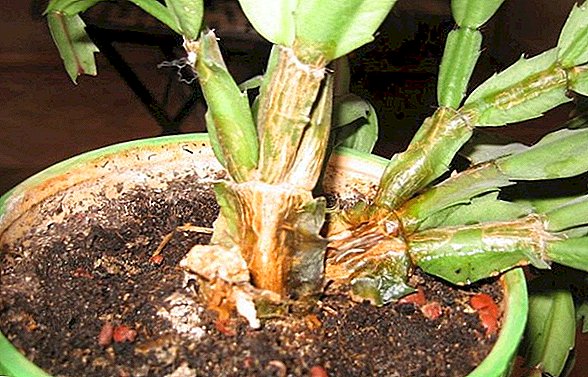
How to prevent the problem?
Given all the possible violations in growing a Decembrist, it is important to understand how to properly water, fertilize and replant it, not to mention choosing the most suitable place to place a flowerpot.
Watering
In this case, the optimal temperature values will be within + 18 ... + 22 ° C, and the frequency of fluid injection should not exceed 1 time in 4-5 days (it is necessary that the upper soil layer always dries out well). In order not to overflow the plant, it is advisable to gradually add liquid to the pot tray without pouring it from above.
We recommend reading the recommendations for caring for the Decembrist flower at home.
More moisture is needed during the formation and blooming of the buds. In such conditions, the soil in the pot should always remain slightly moist, but not sour from excessive water. Immediately after the flowering of the plant and until the middle of spring, the amount of applied liquid is reduced, and in the summer time they adhere to the above frequency: about 1 time in 4-5 days, when the substrate in the pot becomes dry enough.
Ideal water for irrigation of the Decembrist is soft, filtered and settled liquid, with a temperature not lower than + 15 ° C. Sometimes, it can add nutrients in the form of concentrated mineral fertilizers for cacti (sold in flower shops). In the summer heat, it is useful to add leaf spraying or even a small shower to the basal watering;
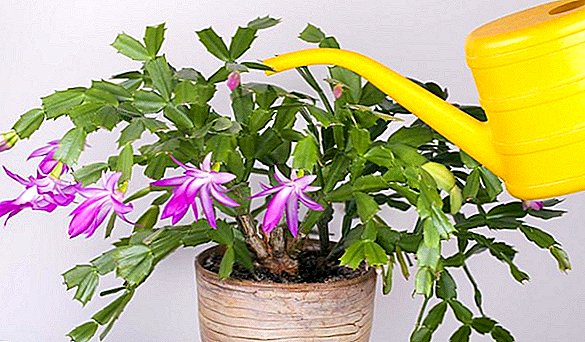
Lighting
Prolonged exposure to direct sunlight can cause leaf dying and the death of the Christmas tree, so in the summer it is advisable to keep it in partial shade, but in fresh air. At home, when placing a flower pot, it is advisable to pay attention to the south-east and south-west windows.
Transfer
Decembrist transplantation is performed at least 1 time in 4-5 years, since it takes so much time to completely deplete the soil and maximize the growth of the root system in the pot already used. However, the speed of the transplant can be influenced by the insufficient amount of nutrients applied, the most important of which in this case will be potassium, phosphorus and a small amount of nitrogen dissolved in water.
Find out also what to do if the Decembrist (Schlumberger) does not want to bloom.
When performing a transplant, it is important to consider the following recommendations:
- It is advisable to use only a nutrient substrate prepared from an equal amount of peat, leafy ground and a small amount of sand or brick dust, which only increase the friability of the soil;
- put a good drainage layer on the bottom of the planting tank, the height of which should take about 1/3 of the pot volume;
- when choosing a pot, it is worth paying attention to shallow, but at the same time wide enough products that best meet the needs of the surface root system of the Christmas tree (it is desirable that they be made of ceramics);
- choosing a specific time for transplantation, focus on the flowering flowerpot: it should not be buds;
- In the first three years of life, the plant can be replanted annually, but adult bushes are not recommended to be disturbed more often 1 time in 3-4 years.
Video: Decembrist transplant
The process of performing the transplant procedure is quite standard:
- Put the drainage layer on the bottom of the pot and fill the container half with the nutrient mixture.
- Carefully remove the plant from the previous pot (you can water it well beforehand) and, after examining the rhizome, plant it in another pot.
- Cover the roots with soil and slightly thicken its upper layer.
- Water the plant and take the pot to a warm, shaded place for further adaptation in new conditions.
Did you know? Regardless of their appearance, all cacti are accumulators of negative energy, muffling the irritability and anger of the inhabitants of the house. According to Feng Shui, pots with such plants placed on either side of the world are able to ward off thieves and simply detractors from their homes.
Useful tips on growing and care
In addition to the above recommendations, there are a few simple tips on planting and further care of the Decembrist.
The main ones include the following cultivation features:
- A cramped pot is more preferable for the Christmas tree than an overly spacious one, since unnecessary moisture accumulates in the excess space.
- Drafts and direct sunlight only harm the leaves and flowers of the cactus, so when placing a flowerpot you should pay attention only to shading areas, without exposure to direct rays of the sun.
- From October-November, it is worthwhile to transfer the Christmas tree to a state of rest, maintaining the temperature in the room at + 15 ... + 18 ° C and watering the plant no more than once every two weeks.
- During the laying of flower buds, try not to move the pot and especially not to move it from place to place, otherwise all ovaries will crumble.
